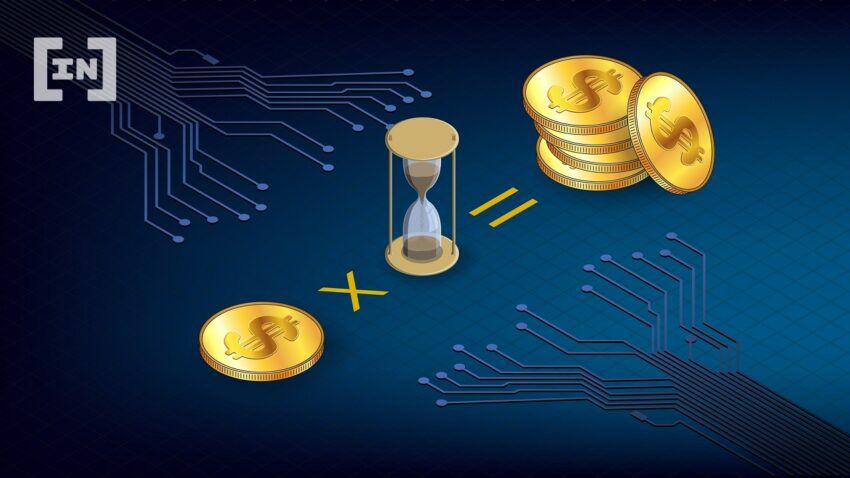Rebase Tokens: Nalinee Singh explains this new financial instrument and the pros and cons of using them.
Decentralized Finance (or DeFi for short) allows users to trade directly amongst themselves through an algorithm; this algorithm is known as a smart contract. Instead of a broker or a bank, DeFi will become the standard in the very near future.
DeFi promises more affordable and direct access to financial services such as earning interest, borrowing, lending, buying insurance, trading derivatives, trading assets, and much more. And, DeFi has seen exponential growth in the past few years. This is, in part, due to its return-on-investment (ROI)-optimizing strategy, staking.
What is staking?
Staking is an increasingly popular crypto-economic model for efficiently scaling the security of decentralized systems. Staking is the act of locking up cryptocurrencies to receive rewards; this necessitates holding digital assets in a cryptocurrency wallet, which helps in making the underlying blockchain of that asset more secure and more efficient (also known as Proof of Stake, or POS).
In return, stakers (i.e. investors) are incentivized with rewards for participating in the health and longevity of the project. There are many cryptocurrency projects – including Olympus DAO, Wonderland, and other OHM forks – that base their primary growth strategy on staking.
Rebase rewards from staking
There are several ways a project can distribute staking rewards to investors. Olympus DAO and its countless forks, such as Wonderland, have utilized a specific distribution method in the form of rebase. Investors in these projects are required to stake their tokens and in return, are given a representative token that accumulates the rebases. These tokens are called rebase tokens.
In the case of Olympus DAO, staked OHM (their native token) becomes gOHM and for Wonderland. TIME becomes MEMO when staked. For these projects, rebases are allocated at the end of each epoch (or unit of time), which is usually every 8 hours. By having frequent epochs these rebases compound rapidly and can lead to returns up to 30,000% p.a. or more, drawing in Annual Percentage Yield (APY) chasers looking to rake in ludicrous returns.
Rebase tokens: What exactly are they?
In the simplest form, a rebase token is also known as an elastic supply token. What this means is that there is a price target. According to supply and demand, the protocol can change its circulating supply daily to achieve less volatility. For instance, let’s say we have an elastic supply token (i.e. rebase token) that wants the value to remain at $1 (price target). If the price goes above $1, then the tokenomics (i.e. token economics) would inflate the current circulating supply, so the supply of the token would increase, bringing the price back down to the $1.
The opposite side to that would apply if the price of the rebase token falls below the $1. Deflation would occur in the circulating supply and investors would receive less tokens in order to bring that price back up to the $1.
High Rebase Reward
Currently, most Olympus Forks provide extremely high APYs to investors. These APYs can range from 50K to millions of percentages. At the time of rebasing, the market capitalization of the rebase tokens increases. However, the increase is not backed by any substantial growth in the treasury. This leads to a dilution – that can be temporary if it is being stabilized by arbitrage.
This scenario causes a downward selling pressure as the tokens are minted and pegged to $1 by its treasury. However, the same $1 backed tokens are sold into the open market for market-value, thus putting heavy downward selling pressure on the underlying token price.
Rebase tokens: Who controls them?
The majority of rebase tokens are run by Decentralized Autonomous Organizations (DAOs) – a DAO is an entity with no central leadership. Decisions get made from the bottom-up, governed by a community organized with a specific set of rules enforced on a blockchain.
Staking rewards is a profit distribution mechanism that the rebase token uses, which simply means any profits that the treasury makes are distributed to the stakers.
Let’s take the example of Olympus DAO: “The protocol distributes tokens by sending them to the staking contract without asking for sOHM back. This increases the ratio of OHM staked to sOHM outstanding, and results in a rebase to correct the difference. For example: there are 500k OHM staked and 500k sOHM outstanding. The protocol produced $5k profit for the day, which it uses to mint and back 5k OHM. It sends those OHM to the staking contract; there are now 505k OHM staked and 500k sOHM outstanding. sOHM supply needs to increase by 5k, or 1%, to return to balance. So, sOHM is rebased up by 1%.”
What about the absurdly high staking rewards aka APYs?
In short, those high APYs are not always accurate, as it depends on how much the treasury is making in profit. Whatever the treasury makes in profit is what is distributed amongst the stakers, and generally the main goal of rebase DAOs is to improve the treasury.
Once it has a larger treasury, it can make more profits in a day and send out more tokens to those stakers as rewards. Obviously, Olympus DAO, OHM is the most popular rebase token with most rebase tokens being forks of Olympus DAO, but most staking rewards work and operate just like this.
Rebase tokens are still very experimental and there are many risks involved. According to Binance, “Elastic supply tokens are highly risky and extremely dangerous investments. You should only invest in them if you completely understand what you are doing. Remember, looking at price charts is not going to be all that helpful, since the number of tokens you hold will change after rebases occurs.”
What they are saying is the price data of rebase tokens are not so important. The fact is that they can manipulate the price data any way they want because they have total control over the circulating supply. Which is the point of rebase token: make the charts look much better, which attracts investors to stake in them.
Rebase tokens: Pros and Cons
This obviously builds up the rebase DAO treasury, which in turn builds up the investor’s rewards. But keep in mind that the amplified gains to the upside is mirrored by amplified losses on the downside. If rebases occur while the token price is going down, you not only lose money from the token price going down, but you will also own less and less tokens after each rebase.
Here is an example, if the price of the rebase token is going up and the amount of token holdings you have is going up, then you are getting a double whammy and you’re winning two times. However, the same thing applies to the downside. If the price starts going down, the protocol makes less profit. This results in lower rebase rewards, which means you would have less tokens plus less price action, so that would be a double whammy to the downside.
A vast majority of crypto projects have little to no value except community sentiment and hype. Rebase tokens were one of the newest trends to hit DeFi. As cryptocurrency investors, we are often pulled into the hype, and promises of exponential gains. However, it is important to understand the above implications and to analyze the safety of an investment solution.
All is not gloom and doom, there are projects that are working on innovative solutions to the vulnerable issues facing rebase DAOs. We are seeing projects with unique value propositions that sit on sustainable growth strategies in any market condition.

Oracle Finance Solutions
Oracle Finance have set out to create value for their investors by developing several unique investment channels within their platform. Their objective is to grow its treasury and use the funds to effectively expand the value of ORCL, its native token. They are building upon the limitations of rebase tokens by eliminating APYs altogether.
Oracle Finance have stepped away from the inflationary $1 backing per token. Instead, tokens will be backed by their treasury, where the total number of stable coins in the treasury corresponds to the total project token. The goal of the protocol is to utilize the treasury funds and build an ecosystem such that net inflow in treasury balances out the decrease due to reward distribution. This will create a passive yield generating currency, with an ever-increasing floor price.
Their platform has been designed on the foundation of sustainability that will generate profits from several channels of distinctive investment opportunities to the user. Although investors will not have the option of APYs, they will have plenty of options to grow their portfolio.
Oracle Finance is building solutions that generate a consistent inflow of funds to its treasury without putting investors at risk. It is a financial platform that facilitates a multitude of cryptocurrency investing and value creation by building a treasury-backed, yield-generating currency, for the next billion users. The goal is to empower the investor and make it easy, efficient, and fast as possible to manage their assets, lend and borrow, earn interest on staking and bonding, bridge between chains, launchpad for new projects including NFTs, and much more.
The Takeaway
For long-term sustainability, it is my opinion that the rebase reward model must be depreciated. Projects can still offer attractive return-on-investments to their investors by increasing the value of their token through solutions that enables treasury growth, and thus the market capitalization. Now that you understand the high risk that comes with rebase tokens, it is up to you to do your due diligence and avoid the crypto hype-wagon. Researching less risky investment opportunities is indeed advisable. But what it really boils down to is deciding whether you’re in it for the quick gains, or if you’re in it for the long-term sustainable rewards.
Got something to say about rebase tokens or anything else? Write to us or join the discussion in our Telegram channel.
Disclaimer
All the information contained on our website is published in good faith and for general information purposes only. Any action the reader takes upon the information found on our website is strictly at their own risk.


